- Turkish Carnation: Growing from Seeds
- Choose high-quality seeds
- Prepare the soil
- Sow the seeds
- Provide the right growing conditions
- Support the plants
- Fertilize and prune
- Protect from pests and diseases
- Harvesting
- Choosing the Right Seeds
- 1. Variety
- 2. Quality
- 3. Freshness
- 4. Germination Rate
- 5. Growing Conditions
- 6. Disease Resistance
- Preparing the Soil
- Sowing the Seeds
- Providing Adequate Watering
- Ensuring Proper Sunlight
- Fertilizing and Pruning
- Fertilizing:
- Pruning:
- Protecting from Pests and Diseases
- 1. Regular Inspection
- 2. Aphid Control
- 3. Fungal Diseases
- 4. Spider Mites
- 5. Slugs and Snails
- Expert Care Tips
- Questions and Answers:
- When is the best time to grow Turkish Carnation from seeds?
- How do I plant Turkish Carnation seeds?
- What is the ideal temperature for growing Turkish Carnation?
- How often should I water Turkish Carnation?
- Can I grow Turkish Carnation indoors?
- How long does it take for Turkish Carnation to bloom?
- How do I care for Turkish Carnation?
- Videos: How to Care and Deadhead Carnations or Dianthus for Beginners
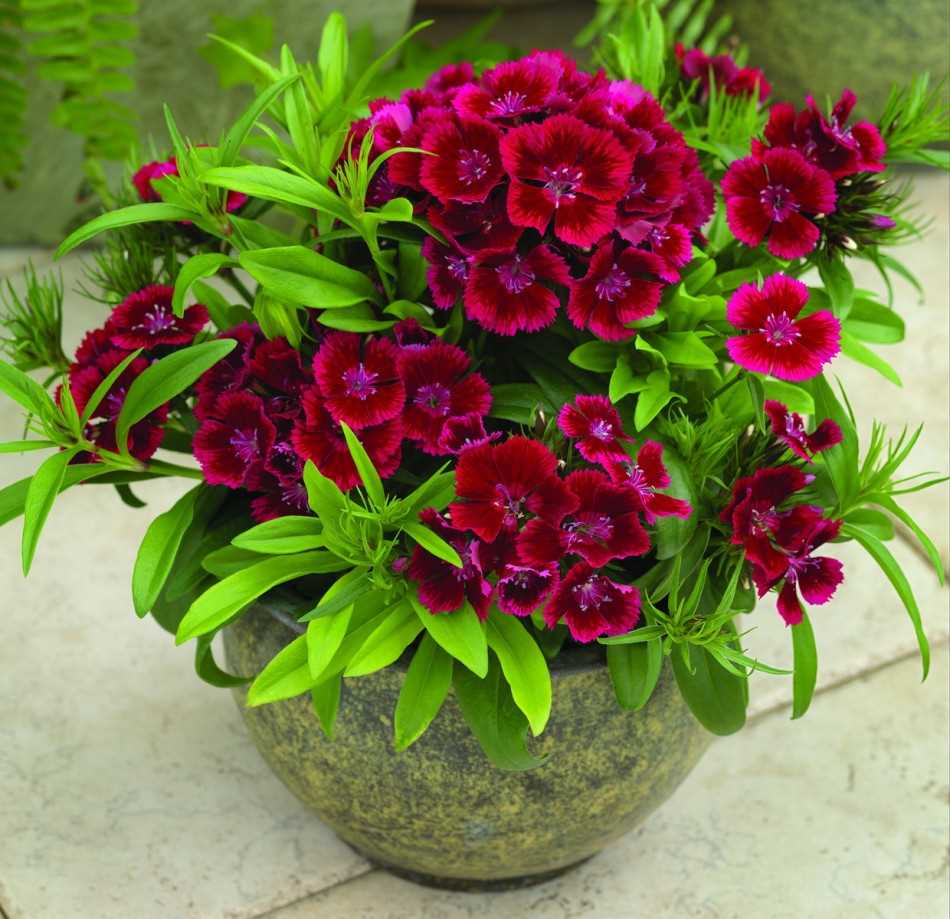
The Turkish carnation, also known as Dianthus caryophyllus, is a stunning flowering plant that is popular for its vibrant colors and pleasant fragrance. It is native to the Mediterranean region and is widely cultivated for its ornamental value. Growing Turkish carnations from seeds can be a rewarding experience, as it allows you to witness the entire lifecycle of the plant, from a tiny seedling to a beautiful blooming flower.
When it comes to planting Turkish carnation seeds, it is important to choose a well-drained location that receives full sun. These plants thrive in soil that is rich in organic matter and has a pH level between 6.0 and 7.0. Before planting the seeds, you can prepare the soil by removing any weeds, loosening it with a garden fork, and adding compost or aged manure to improve its fertility. Once the soil is ready, you can sow the seeds, keeping them about 1/4 inch deep and 12 inches apart.
Proper care is essential for the healthy growth of Turkish carnations. Regular watering is important, especially during dry spells, but be careful not to overwater them as excessive moisture can cause root rot. It is also advisable to mulch around the plants to help retain moisture and suppress weed growth. Pinching or pruning the plants regularly will promote bushier growth and increase the number of flowers.
In conclusion, growing Turkish carnations from seeds can be a delightful experience for any gardening enthusiast. By providing the right growing conditions and proper care, you can enjoy the beauty and fragrance of these lovely flowers in your own garden. Whether you are a beginner or an experienced gardener, following these expert tips will help you successfully grow Turkish carnations and create a vibrant and fragrant display.
Turkish Carnation: Growing from Seeds
Carnations are beautiful flowering plants that are popular for their vibrant colors and pleasant fragrance. The Turkish Carnation, also known as Dianthus caryophyllus, is a specific variety of carnation that is native to Turkey. Growing Turkish Carnations from seeds is a rewarding and enjoyable gardening activity. Here are some expert tips to help you successfully grow Turkish Carnations from seeds:
Choose high-quality seeds
When selecting Turkish Carnation seeds, it is important to choose high-quality seeds from a trusted supplier. Look for seeds that are fresh and viable, as this will increase the chances of successful germination.
Prepare the soil
Turkish Carnations prefer well-draining soil that is rich in organic matter. Prepare the soil by removing any weeds, rocks, or debris. Amend the soil with compost or aged manure to improve its fertility and drainage.
Sow the seeds
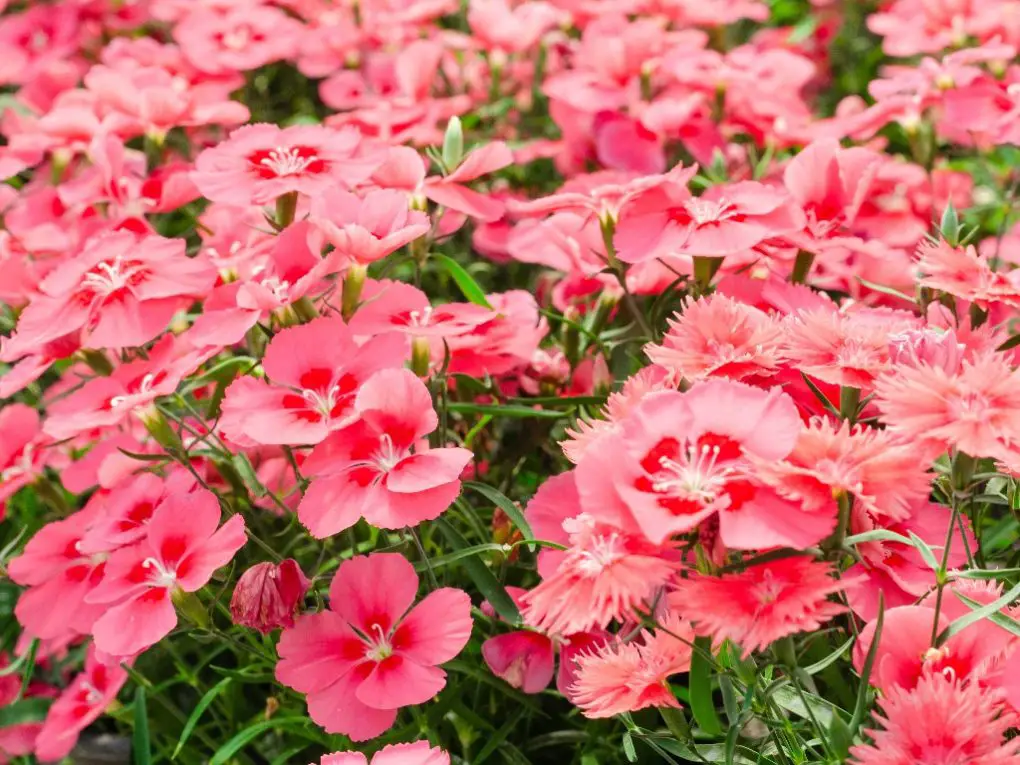
Sow the Turkish Carnation seeds directly into the prepared soil. The ideal time for sowing is in early spring or early autumn. Make sure to sow the seeds at a depth of about 1/4 inch and provide proper spacing between each seed to allow room for growth. Water the seeds gently after sowing.
Provide the right growing conditions
Turkish Carnations thrive in full sun or partial shade. Make sure that your plants receive at least 6 hours of direct sunlight each day. Maintain a moderate temperature range of 60-70 degrees Fahrenheit (15-21 degrees Celsius) for optimal growth. Water the plants regularly, keeping the soil moist but not waterlogged.
Support the plants
As Turkish Carnations grow, provide support to the plants by using stakes or cages. This will help keep the plants upright and prevent them from bending or breaking under the weight of their flowers.
Fertilize and prune
Once the Turkish Carnations have established and started to grow, you can fertilize them with a balanced, slow-release fertilizer. Follow the instructions on the fertilizer package for the proper application rate. Additionally, prune the plants regularly to promote bushier growth and remove any dead or damaged foliage.
Protect from pests and diseases
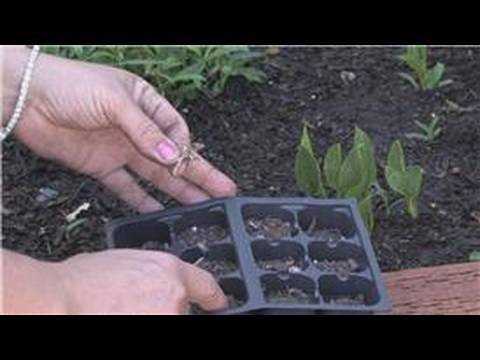
Keep an eye out for common pests such as aphids or spider mites. If you notice any signs of infestation, treat the plants with an appropriate insecticide or use organic pest control methods. Additionally, prevent diseases such as powdery mildew by maintaining good air circulation around the plants and avoiding overhead watering.
Harvesting
Turkish Carnations typically bloom in late spring or early summer. Once the flowers are fully open and the petals are vibrant in color, you can harvest them for bouquets or arrangements. Use a sharp pair of garden scissors to cut the flowers just above the leaves.
By following these expert tips, you can successfully grow Turkish Carnations from seeds and enjoy their beautiful blooms in your garden.
Choosing the Right Seeds
When it comes to growing Turkish Carnation from seeds, it is important to choose the right type of seeds for successful cultivation. Here are some factors to consider when selecting your seeds:
1. Variety
Turkish Carnations come in a variety of colors and forms. You can choose from traditional single-flowered varieties or go for the more intricate double-flowered ones. Decide on the type of carnation you want to grow and look for seeds of that particular variety.
2. Quality
It is crucial to ensure that you select high-quality seeds. Look for reputable seed suppliers or nurseries to purchase your seeds from. Quality seeds have a higher germination rate and are more likely to produce healthy and vigorous plants.
3. Freshness
Freshness of the seeds is another important factor to consider. The fresher the seeds, the higher the chances of germination. Check the packaging date or inquire about the seed’s freshness when making a purchase.
4. Germination Rate
Some varieties of Turkish Carnation have higher germination rates than others. It is recommended to choose seeds with a high germination rate to ensure successful cultivation. This information is usually provided on the seed packaging or can be obtained from the supplier.
5. Growing Conditions
Consider the growing conditions in your area before choosing the seeds. Some carnation varieties are more suitable for specific climates or soil types. Ensure that the seeds you select are appropriate for the climate, sunlight exposure, and soil conditions in your garden.
6. Disease Resistance
Look for seed varieties that are known for their disease resistance. Turkish Carnations can be vulnerable to various diseases. By choosing disease-resistant varieties, you can reduce the risk of your plants getting infected and ensure higher chances of success.
By keeping these factors in mind and selecting the right seeds, you can lay a strong foundation for successful Turkish Carnation cultivation.
Preparing the Soil
Before planting Turkish carnation seeds, it is important to prepare the soil properly to ensure optimal growth and development. Follow these steps to prepare your soil:
- Choose a well-draining location: Turkish carnations prefer well-drained soil, so select a location that does not have standing water after rainfall. If your soil tends to retain water, you can improve drainage by adding organic matter or creating raised beds.
- Remove weeds and grass: Clear the planting area of any weeds or grass. These can compete with the young carnation plants for nutrients and water.
- Loosen the soil: Use a gardening fork or a tiller to loosen the soil to a depth of at least 8-10 inches. This helps to improve aeration and allows the roots to penetrate the soil more easily.
- Amend the soil: Turkish carnations prefer slightly acidic soil with a pH between 6.0 and 7.0. Test your soil’s pH and amend it accordingly by adding lime to raise the pH or sulfur to lower it.
- Add organic matter: Incorporate well-rotted compost or aged manure into the soil to improve its fertility and texture. This helps to provide essential nutrients and improves moisture retention.
- Level the soil: Use a rake to level the soil surface and remove any debris or large clumps.
By following these steps, you can create a suitable growing environment for Turkish carnations and give them the best chance for success.
Sowing the Seeds
To start growing Turkish Carnation from seeds, follow these steps:
- Choose a well-draining pot or seed tray for sowing the seeds. Make sure it has drainage holes to prevent waterlogging.
- Fill the pot or seed tray with a good quality seed starting mix. This will provide the seeds with the necessary nutrients and moisture.
- Moisten the seed starting mix by watering it lightly. The mix should be damp but not soaking wet.
- Scatter the Turkish Carnation seeds evenly over the surface of the seed starting mix.
- Lightly press the seeds into the mix using your fingers or a small tool. Do not bury the seeds too deep, as they need light to germinate.
- Cover the seeds with a thin layer of vermiculite or sand. This will help retain moisture and provide some protection.
- Water the seeds gently using a misting bottle or a light spray. Be careful not to dislodge the seeds or create a lot of disturbance.
- Place the pot or seed tray in a warm location with indirect sunlight.
- Keep the seeds consistently moist by misting them regularly. Avoid overwatering, as this can lead to fungal diseases.
- Germination usually takes around 2-3 weeks. Once the seedlings have developed true leaves, they can be transplanted into individual pots.
Sowing Turkish Carnation seeds can be a rewarding experience, and with proper care and attention, you can enjoy beautiful and fragrant blooms in your garden.
Providing Adequate Watering
Proper watering is crucial for the healthy growth of Turkish Carnations. Here are some expert tips on how to provide adequate watering:
- Watering Frequency: Turkish Carnations should be watered regularly, especially during the summer months. Aim to water the plants at least once a week, but increase the frequency during hot, dry spells.
- Watering Amount: Make sure to thoroughly water the soil around the plant, ensuring the water reaches the roots. The soil should be moist but not waterlogged. Avoid overwatering, as this can lead to root rot.
- Watering Technique: If possible, try to water the plants at the base rather than from above. This helps prevent the foliage from getting wet, which can increase the risk of diseases. Drip irrigation or soaker hoses are great options for providing targeted watering.
- Watering Time: Water the Turkish Carnations in the early morning or late afternoon, when the temperatures are cooler. This allows the plants to absorb the water before the sun evaporates it.
- Monitor Soil Moisture: Regularly check the moisture level of the soil by inserting your finger about an inch deep into the soil. If it feels dry, it’s time to water. If it feels moist, wait for a day or two before watering again.
- Rainwater is Best: Whenever possible, use rainwater for watering your Turkish Carnations. Rainwater is naturally rich in nutrients and is free from chemicals found in tap water, providing better overall growth for your plants.
By providing adequate watering to your Turkish Carnations, you’ll ensure they have the moisture they need to thrive and produce beautiful blooms.
Ensuring Proper Sunlight
Proper sunlight is crucial for the growth and development of Turkish Carnation plants. These plants require at least 6-8 hours of direct sunlight daily to thrive and produce vibrant and healthy blooms.
When selecting a location to plant your Turkish Carnation seeds or seedlings, choose an area that receives full sun. This means an area that is not shaded by trees, buildings, or other structures for most of the day.
It’s important to note that Turkish Carnation plants can tolerate some partial shade, especially during hotter parts of the day. However, prolonged periods of shade can lead to weak growth and poor blooming.
If you’re planting Turkish Carnation in a garden bed, make sure to choose a spot that gets ample sunlight throughout the day. Avoid planting them in areas that are constantly shaded, such as near tall shrubs or under trees with dense canopies.
In case you’re growing Turkish Carnation in containers, consider placing them in a location where they can receive the maximum amount of sunlight. This could be on a sunny balcony, patio, or near a south-facing window.
It’s also a good practice to keep an eye on the movement of the sun throughout the day. If necessary, you can even move your containers or adjust the position of your plants to ensure they are getting enough sunlight.
Remember, a lack of proper sunlight can result in weak and leggy plants, decreased blooming, and ultimately the death of the Turkish Carnation. So, take the necessary steps to provide them with the sunlight they need to thrive.
Fertilizing and Pruning
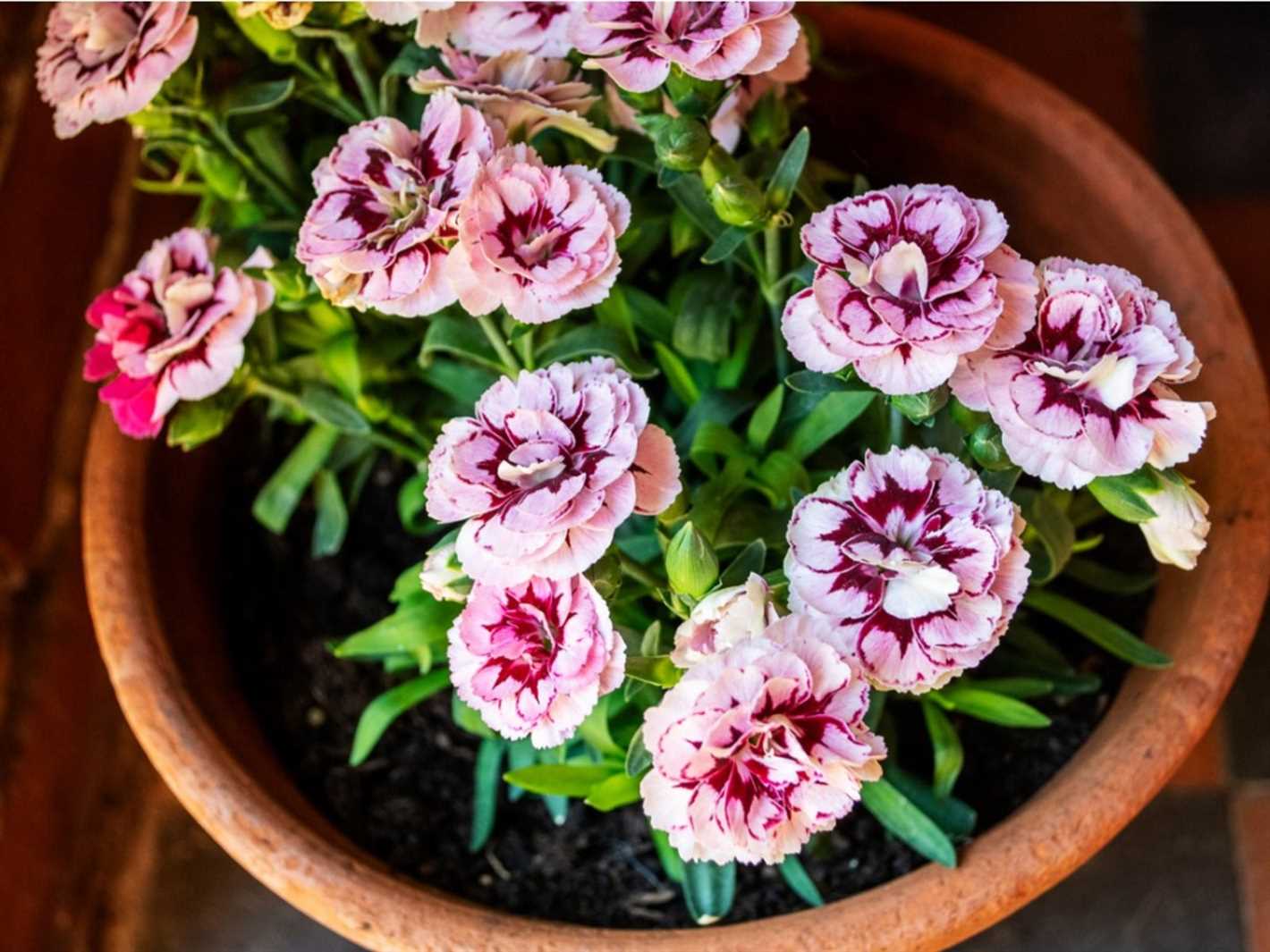
Proper fertilizing and pruning techniques are essential for maintaining healthy Turkish Carnation plants. Here are some expert tips to help you fertilize and prune your plants:
Fertilizing:
- Begin fertilizing your Turkish Carnation plants in early spring, before they start flowering. Use a balanced fertilizer with equal amounts of nitrogen, phosphorus, and potassium.
- Dissolve the fertilizer in water according to the package instructions. Water the plants with the diluted fertilizer solution, making sure to thoroughly wet the soil.
- Repeat the application of fertilizer every 4-6 weeks throughout the growing season. Adjust the amount of fertilizer based on the size and health of the plants.
- Monitor the plants for signs of nutrient deficiencies, such as yellowing leaves or stunted growth. If necessary, apply a specific fertilizer high in the deficient nutrient.
- Avoid over-fertilizing, as it may lead to excess foliage growth at the expense of flower production. Follow the recommended dosage on the fertilizer packaging.
Pruning:
- Prune Turkish Carnation plants in early spring before new growth begins. Use clean, sharp pruning shears to cut back the dead or damaged stems.
- Thin out the center of the plant by removing some of the older stems. This will improve air circulation and promote better flower production.
- Pinch or cut off the faded flowers regularly to encourage the plant to produce more blooms. This will also help prevent the plant from going to seed and extend the flowering period.
- Trim back any overly long or straggly stems to maintain a compact and bushy appearance. Cut above a leaf node to encourage branching.
- Dispose of the pruned material properly to prevent the spread of diseases or pests.
By following these fertilizing and pruning tips, you can help your Turkish Carnation plants thrive and produce beautiful, vibrant blooms throughout the growing season.
Protecting from Pests and Diseases
Protecting your Turkish Carnation plants from pests and diseases is essential for their healthy growth and longevity. Here are some expert tips to help you keep your plants safe:
1. Regular Inspection
Regularly inspect your plants for any signs of pests or diseases. Look for symptoms such as wilting, distorted leaves, discoloration, holes, or the presence of insects.
2. Aphid Control
Aphids are one of the common pests that can infest Turkish Carnation plants. Use insecticidal soap or neem oil to control aphids. Dilute the insecticidal soap according to the package instructions and apply it to the affected plants. Neem oil can be mixed with water and sprayed on the plants.
3. Fungal Diseases
To prevent fungal diseases, make sure the plants have good air circulation. Avoid watering the plants from above, as this can lead to fungal infections. Water at the base of the plants, preferably in the morning, so that the leaves have time to dry during the day.
4. Spider Mites
Spider mites can cause damage to the leaves by sucking the plant juices. They can be controlled by regularly spraying the plants with water to dislodge them. In severe cases, use insecticidal soap or neem oil according to the instructions on the package.
5. Slugs and Snails
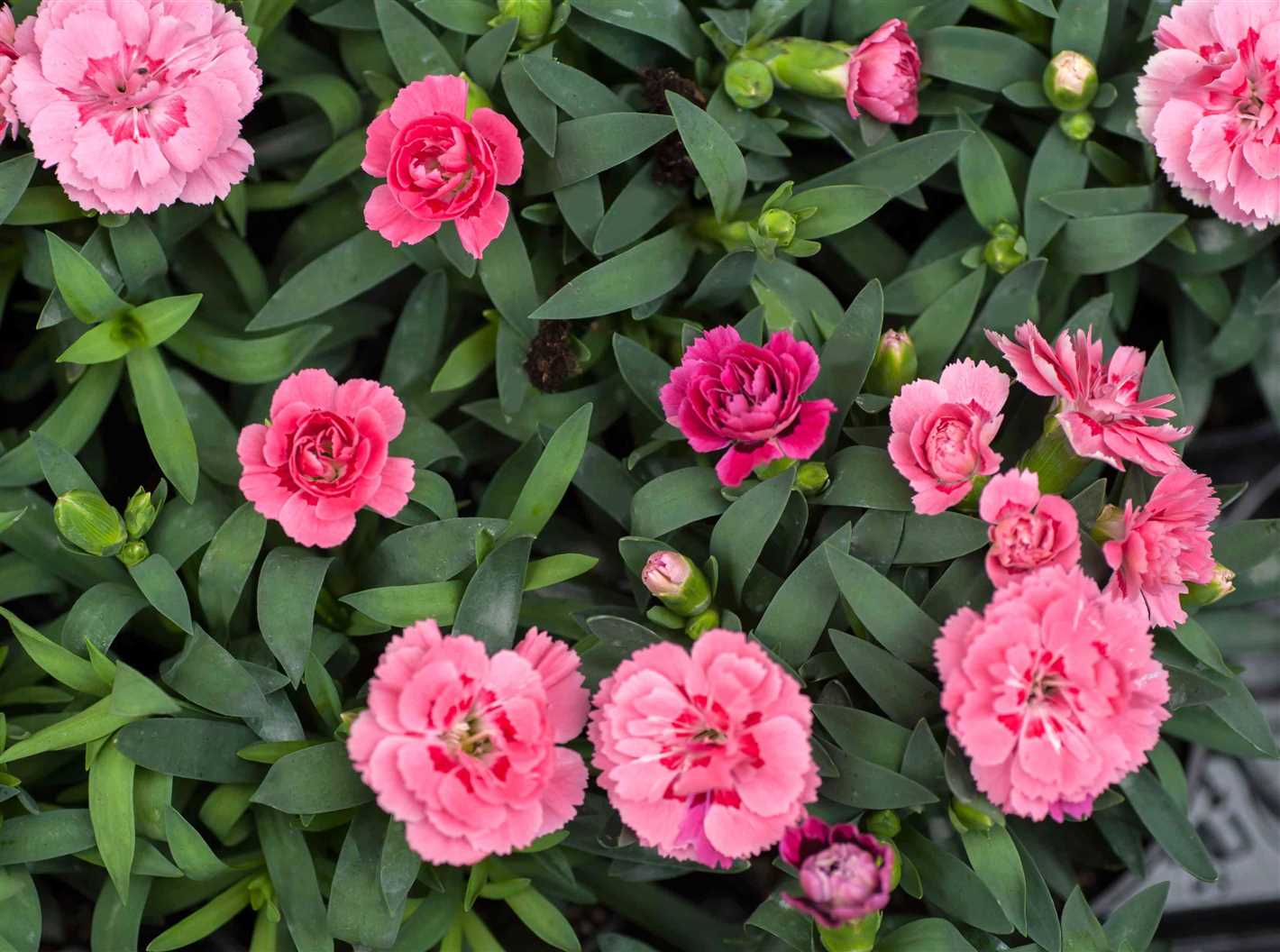
Slugs and snails can feed on the foliage and flowers of Turkish Carnation plants. To prevent them, remove any debris or hiding spots near the plants. You can also place traps, such as beer traps, to catch and drown the slugs and snails.
By following these tips and regularly monitoring your plants, you can protect your Turkish Carnations from pests and diseases, ensuring their healthy growth and beautiful blooms.
Expert Care Tips
- Choose a well-draining soil for your Turkish carnation plants.
- Make sure to plant the seeds in an area that receives at least 6 hours of direct sunlight per day.
- Water the plants regularly, keeping the soil moist but not soggy.
- Provide support for the plants as they grow, using stakes or a trellis system.
- Remove any weeds that may compete with the Turkish carnation plants for nutrients and space.
- Apply a balanced fertilizer every month during the growing season to promote healthy growth and blooming.
- Deadhead the flowers regularly to encourage continuous blooming.
- Monitor the plants for any signs of pests or diseases, and take appropriate action if necessary.
- During the winter months, provide protection for the plants from frost or extremely cold temperatures.
- Consider propagating Turkish carnations through stem cuttings for additional plants.
Questions and Answers:
When is the best time to grow Turkish Carnation from seeds?
The best time to grow Turkish Carnation from seeds is in the spring when the soil temperature is consistently above 60°F (15°C).
How do I plant Turkish Carnation seeds?
To plant Turkish Carnation seeds, start by preparing a well-draining soil mix. Sow the seeds on the surface of the soil and lightly press them down. Keep the soil evenly moist and place the pot or tray in a warm and bright location. The seeds should germinate in about 2-3 weeks.
What is the ideal temperature for growing Turkish Carnation?
Turkish Carnation prefers temperatures between 60°F (15°C) and 70°F (21°C) during the day, and slightly cooler temperatures at night. It can tolerate mild frost, but it is best to protect the plant from freezing temperatures.
How often should I water Turkish Carnation?
Turkish Carnation prefers evenly moist soil, so make sure to water it when the top inch of soil feels dry to the touch. Avoid overwatering, as it can lead to root rot. During hot summer months, you may need to water more frequently.
Can I grow Turkish Carnation indoors?
Yes, Turkish Carnation can be grown indoors as long as it receives bright, indirect sunlight. Place the plant near a south-facing window or use artificial grow lights to provide the necessary light. The plant also needs good air circulation, so avoid placing it in a sealed, poorly ventilated room.
How long does it take for Turkish Carnation to bloom?
Turkish Carnation usually starts to bloom in about 3-4 months after planting. However, it may take longer if the plant is grown from seeds instead of cuttings. Once the plant starts blooming, it will continue to produce flowers for several months.
How do I care for Turkish Carnation?
To care for Turkish Carnation, provide it with full sun or bright, indirect light, well-draining soil, and regular watering. Pinch back the spent flowers to promote more blooms and prune the plant in early spring to maintain its shape. Fertilize with a balanced, water-soluble fertilizer every 2-3 weeks during the growing season.







